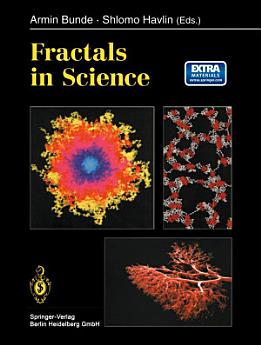Fractals in Science
Armin Bunde · Shlomo Havlin
Dec 2013 · Springer
Ebook
300
Pages
reportRatings and reviews aren’t verified Learn More
About this ebook
Applying fractal geometry to science is bringing about a breakthrough in our understanding of complex systems in nature that show self-similar or self-affine features. Self-similar and self-affine processes appear everywhere in nature, in galaxies and landscapes, in earthquakes and geological cracks, in aggregates and colloids, in rough surfaces and interfaces, in glassy materials and polymers, in proteins as well as in other large molecules. Fractal structures appear also in the human body; well known examples include the lung and the vascular system. Furthermore, fractal geometry is an important tool in the analysis of phenomena as diverse as rhythms in music melodies and in the human heart beat and DNA sequences. Since the pioneering work of B.B. Mandelbrot, this interdisciplinary field has expanded very rapidly. The scientific community applying fractal concepts is very broad and ranges from astronomers, geoscientists, physicists, chemists and engineers to biologists and those engaging in medical research.
Rate this ebook
Tell us what you think.
Reading information
Smartphones and tablets
Install the Google Play Books app for Android and iPad/iPhone. It syncs automatically with your account and allows you to read online or offline wherever you are.
Laptops and computers
You can listen to audiobooks purchased on Google Play using your computer's web browser.
eReaders and other devices
To read on e-ink devices like Kobo eReaders, you'll need to download a file and transfer it to your device. Follow the detailed Help Center instructions to transfer the files to supported eReaders.






